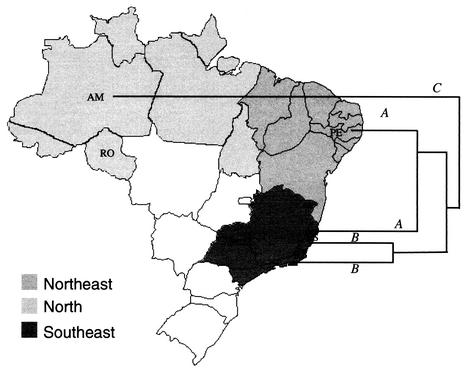FIG. 3.
Map of Brazil showing the areas from which the L. (V.) braziliensis isolates originated. A schematic and summarized dendrogram showing the relationship among the genotypic groups (A, B, and C as defined in Fig. 1) was superimposed. The level of genetic diversity found among the isolates from each area where the parasites were endemic was estimated by using the average of similarities as follows (averages ± the standard deviations of MLEE and IRT, respectively): Amazonia (0.75 ± 0.082 and 0.76 ± 0.095), Pernambuco (0.92 ± 0.01 and 0.83 ±0.082), Espírito Santo A (1.0 and 0.89 ± 0.05), Espírito Santo B (1.0 and 0.83 ± 0.11), and Rio de Janeiro (1.0 and 0.93 ± 0.035). The Brazilian states where the isolates were collected included Amazonia, Rondônia, Pernambuco, Espírito Santo, and Rio de Janeiro (see Table 1).

